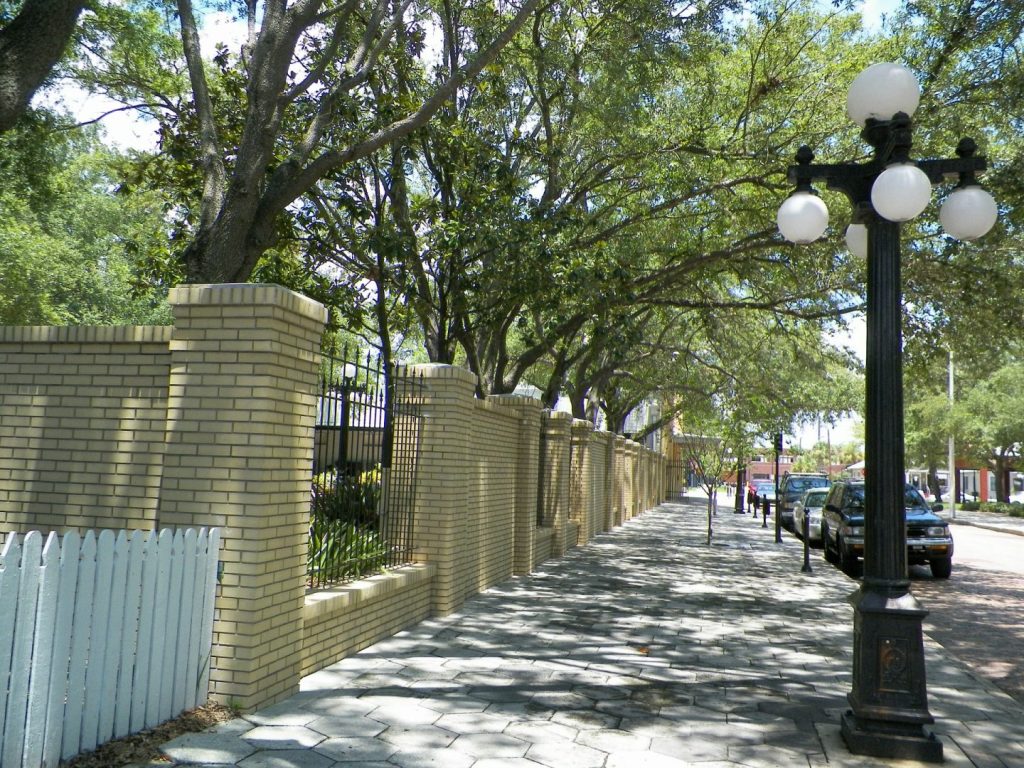
An attractive, wide, well-lit, hard-surfaced sidewalk allows anyone to use it at any time of day and have the same access and ability to use it as anyone else – a great example of accessible design
While aging in place solutions and design strategies pertain to individuals in their homes and is strictly a residential concept, it is a solid approach to areas outside the home/ We are just going to give it a different label to differentiate between residential applications and those outside the home.
We don’t call it aging in place when we provide design treatments to offices, shopping malls, airline terminals, and other public spaces. How can we? They aren’t our homes. Even nursing homes and assisted living facilities aren’t our homes in the independent living sense that remaining on our own creates for us. Nevertheless, we can use accessible design concepts in all of these non-residential settings to achieve similar results.
The chief difference is that with aging in place designs we are concerned about meeting the needs of specific individuals in their homes. It doesn’t matter what their neighbors might need, It’s centered on them. We evaluate their abilities and what the home environement presents and create a design that facilitates safety, accessibility, comfort, convenience, and livability. Still, a more universal design or visitable approach in our client’s home will achieve the results we want without creating a look that might call attention to what we have done.
In the marketplace, we never know who might be coming into the space and using it at any given time or at all. Therefore, it intentionally cannot appeal to the needs of any one individual but must view them collectively. We know that there is going to be a range of abilities that affect how people ambulate the space, see, hear, and otherwise experience their surroundings. We know that there will be various abilities with balance and use of assistive devices.
We must strive for the lowest common denominator approach that achieves the optimum design without excluding anyone that might choose to visit that space. Some people never will, but doesn’t mean that they shouldn’t be accommodated if they ever did choose to do so.
If someone is excluded for entering, using, or remaining relatively comfortable while in a public space of any type, then the design would not be considered to be universal. Pretty simple and straightforward. Either it is accommodating or it isn’t. Either it applies to all, or there are exceptions, When there are noticeable exceptions, we must revisit the design to rectify this to achieve the universal design appeal we are seeking.
Just as we do when we are working with someone’s home, we start on the outside and then look inward. We look at the approach, access points. passways, doorway and hallway widths. flooring surfaces, levels flooring with obvious transitions between types of flooring (color, texture, or thickness), door hardware, resistance provided by items that need to be accessed on a regular basis (doors, drawers, cabinets, furniture, and similar objects), seating, wall controls, natural light, and artificial lighting.
We don’t know if someone will be coming into a public space as a casual, one-time or now-and-then, visitor or if they will have more regular, extended time using the facility – such as an employee at their place of business. Will they be regular visitors but for relatively short periods of time, such as at a library or transit station? Will they be visiting other people at a hospital or nursing facility? Designs here of a universal nature accommodate the employees, the residents, and visitors from the outside – facilitating ease of movement, access, comfort, convenience, and enjoyability of the space even though there is an underlying care and treatment function present.
The easiest way to achieve accessible design in the marketplace is just to experience it and note anything that might be a consideration and then figure out a way to deal with it so that it no longer presents any issues. Consider such areas as elimination of steps, widening of passageways, removal of barriers, fixing too strong or too weak color contrasts, treating or moving the sources of glare from reflected lighting, hardware that is or could be difficult to use, and improving flooring that is challenging to use.
When anyone can come into a public space and feel as if it has been designed for them and their comfort, or conversely that they have not been excluded from enjoying the space to their particular abilities or limitations, we will have succeeded in taking the aging in place ideal to the marketplace and instilled an environment that is generally usable and safe to be in for anyone.
Aging in place as a concept is strictly for use in people’s homes, but the larger concept of universal design and accessibility can be transferred to public areas for a great experience for all coming into these areas.
